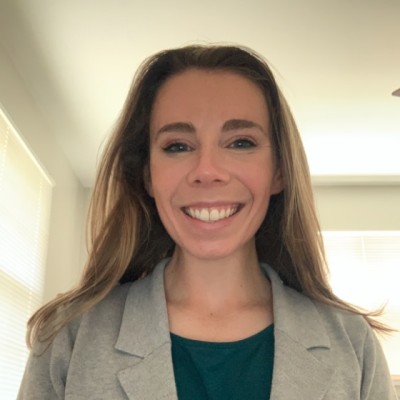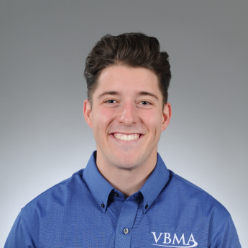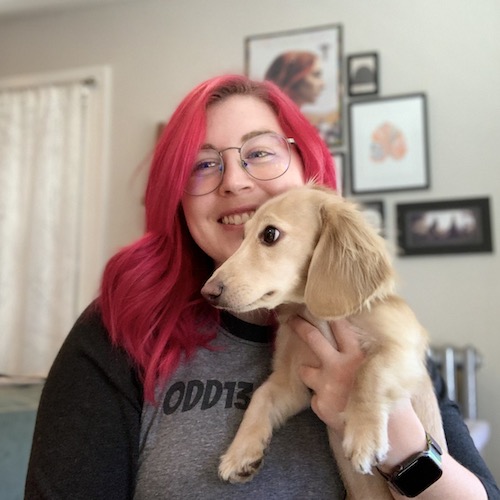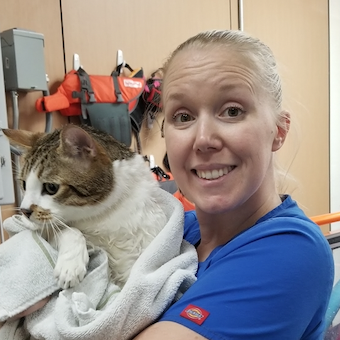Togetherness was the #1 reason veterinary professionals thought their team culture was “good.”
But, less than 50% of veterinary professionals think their practice has a strong sense of belonging and trust.
Across our industry, our people are craving authentic, caring connections. We must uplift one another and build rich, unified community in vet med.
3 Ways to Build a Richer Community in Vet Med
1. Collaboration over competition
The first key to community is collaboration instead of competition.
At hound, we call this “baking more cookies.” There are three options in any situation. We can either:
- Fight over the cookie jar (compete)
- Share one cookie (compromise)
- Bake more warm cookies together so everyone can enjoy (collaborate)
In vet med, we need to focus on building more win/win/win scenarios and rejecting zero-sum games. Chocolate chip or sugar? 😉
2. Connect with your peers
“Authentic community is the most human thing we can do,” says Mac Reddin, CEO of Commsor. “Being able to connect with others around a shared interest, passion, or purpose allows people to learn and share their own knowledge, get creative, and opens the doors for opportunities they wouldn't otherwise have.”
Sure, you know their roles at work, but do you really know them? Enough to care personally about them? Enough to check on them when they are having a bad day?
By truly connecting and bonding with your peers, you build a greater sense of trust, belonging, and community.
In practice, this looks like giving teams the space and time to do this! Putting on special events, team building activities, or just going and grabbing tacos and margaritas after a hard shift.
Want to be more intentional with your practice culture? Check out rally.
3. Engage with the broader community
Your community is everything from the morning shift, to the whole nursing team, to the entire practice staff, to the other veterinary professionals in your city, your state, our world.
By reaching out, engaging, and bonding with the community around you, you build better businesses, stronger bonds, and more vibrant coalitions across the world.
It might sound esoteric, but it’s as simple as reaching out, including others, and truly engaging with the people around you.
It can also look like getting involved with affinity orgs in the industry or in your community, or volunteering for local charities.
When we see ourselves as a collective, as opposed to an individual, our connections and life become richer.
Want to explore more practical tips?
Check out the section on building a community through vulnerability in The Ultimate Guide for Awesome Culture in Veterinary Medicine.
Want to share some of your favorite practical tips?
Collaborate on an article with us! (Email sara@hound.vet for details.)
From the Experts
From Mac Reddin, CEO @ Commsor:
"Authentic community is the most human thing we can do. Being able to connect with others around a shared interest, passion, or purpose allows people to learn and share their own knowledge, get creative, and opens the doors for opportunities they wouldn't otherwise have.
Just as with communities of old, like those formed around neighbors or religious or educational institutions, communities created by businesses can strengthen bonds between people and organizations and generate compounding value for everyone involved. There is nothing more powerful than bringing people together around a shared interest, purpose, or value."
From Leah Nehlia, National Committee Member @ SAVMA:
"The answer to this question is going to vary depending on what sector in vetmed you are in, how long you’ve been in the field, and the culture varieties you’ve seen. One thing most of us can agree on is that we have done a much better job of taking care of our patients and clients than ourselves, let alone our colleagues. Why can’t we seem to translate that effort into the health and culture of our profession? The solution is difficult to translate because it takes a different type of strength. Building community takes vulnerability, humility, and personal accountability which are not the typical traits we think of for a competent and confident veterinary professional.
What does practicing humility look like? It’s a twenty-year veteran doctor listening to a sixteen year-old kennel attendant on how to make the boarding checkout process more efficient. What does vulnerability look like? It is a seasoned technician tasked with training the exuberant new technician, and asking for help from a colleague when it comes to teaching the new hire a skill they never quite mastered. What does personal accountability look like? It’s a practice manager acknowledging they need more training in order to fulfill their hospital’s vision for expansion. All of these examples occurred in hospitals I’ve worked at but I’ve also left. I left because my colleagues shared these lessons and tools, which enabled me to keep going. They were all generous enough to empower me so I kept going on this road in veterinary medicine, and this road is great. We will continue to strengthen vet med if we keep sponsoring our mentees, having tough conversations and practicing the lessons learned in them, and removing barriers to success by bringing people with us on the way up.
Vet med is not a broken community. It is resilient and adapting so we all stay on this road to greatness."
From the 2022 National VBMA Executive Board:
“Veterinary Medicine is a field full of driven competitors. That drive is what gets us into vet school, what helps us survive the rigorous coursework, and gets us the internship or job that we desire upon graduation. The greatest concern with this ,however, is that we are not well-versed in creating communities that lift everyone within it, especially right after graduation. The Veterinary Business Management Association (VBMA) has made it our mission to help our veterinary students form these communities by our mission to advance the profession through increasing business knowledge, creating networking opportunities, and empowering students to achieve their personal and professional goals. The ideal rich community is inclusive, supportive, and sustaining. This environment cultivates healthy veterinarians and thus, a successful profession for all.
This past year has been especially difficult for the entire veterinary community. Imposter syndrome and isolation from classmates have been overwhelming for many. One of our goals is to develop a strong, uplifting community that can help remind you all that you have accomplished and that you aren’t alone, without judging you for these feelings. By creating a community of vets that feel more secure in themselves and their work, collectively they can improve their mental, physical, and emotional health. This will allow them to feel more satisfied in their career and create space for higher levels of animal care. By caring for ourselves and each other, we can do a better job of caring for the animals we serve. Veterinary medicine has never been designed to be a solo act. The culture students have been beginning to build revolves around work-life balance, mental health, adaptability, and realizing our worth. VBMA is proud of the current veterinary students and we are confident that the future of veterinary medicine is in good hands.”
Madison Baumgartner, 2022 National President
Joe Thurston, 2022 National Vice President
Delaney Romaniello, 2022 National Treasurer
Kyleigh Tyler, 2022 National Business Certificate Director
Jack Miller, 2022 National Marketing Director
Tiffany Galen, 2022 National Compliance Director
From Thomas Kile, Veterinary Student @ WSU - Pullman:
“Veterinary medicine has changed drastically in the last two years, primarily because the rate of pet ownership has skyrocketed, increasing the demand for veterinarians and shifting the power dynamic more from the employer to the employee. Because of this shift, veterinary professionals have more autonomy and options in their job search. This inflection point in the field poses an opportunity for the culture of veterinary medicine to start to embody a healthier and more positive reputation.
Social media has had a large influence in shaping the field’s culture in recent years. Professionals have taken to the internet to share tips for building a healthy and thriving community for young practitioners, and practice owners alike. Through this movement we have seen virtual communities form, banding together to make a positive change towards more healthy practice environments that foster growth and co-creation.
Because of these conversations, we have seen the industry go through a metamorphosis. Team bonding, better pay, and improved opportunities for growth have become more common, with practices that have not made efforts to improve culture having trouble with retention. The industry is starting to look like one that supports individuals in their personal and professional goals.
With these changes, the veterinary community should feel empowered to continue to improve the culture to enable everyone to thrive and accomplish their dreams”.



.JPG)

.png)


.gif)


